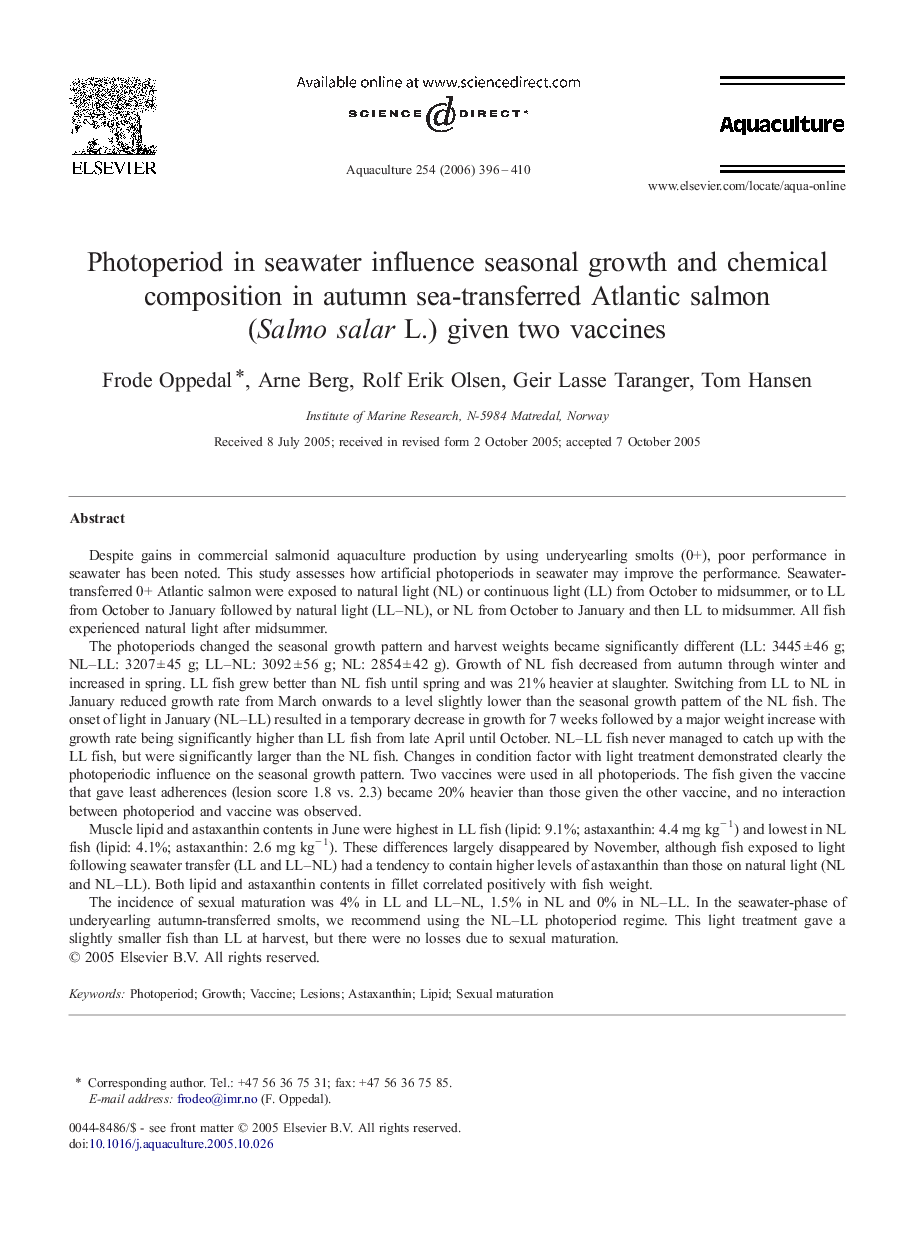| کد مقاله | کد نشریه | سال انتشار | مقاله انگلیسی | نسخه تمام متن |
|---|---|---|---|---|
| 2426012 | 1552987 | 2006 | 15 صفحه PDF | دانلود رایگان |

Despite gains in commercial salmonid aquaculture production by using underyearling smolts (0+), poor performance in seawater has been noted. This study assesses how artificial photoperiods in seawater may improve the performance. Seawater-transferred 0+ Atlantic salmon were exposed to natural light (NL) or continuous light (LL) from October to midsummer, or to LL from October to January followed by natural light (LL–NL), or NL from October to January and then LL to midsummer. All fish experienced natural light after midsummer.The photoperiods changed the seasonal growth pattern and harvest weights became significantly different (LL: 3445 ± 46 g; NL–LL: 3207 ± 45 g; LL–NL: 3092 ± 56 g; NL: 2854 ± 42 g). Growth of NL fish decreased from autumn through winter and increased in spring. LL fish grew better than NL fish until spring and was 21% heavier at slaughter. Switching from LL to NL in January reduced growth rate from March onwards to a level slightly lower than the seasonal growth pattern of the NL fish. The onset of light in January (NL–LL) resulted in a temporary decrease in growth for 7 weeks followed by a major weight increase with growth rate being significantly higher than LL fish from late April until October. NL–LL fish never managed to catch up with the LL fish, but were significantly larger than the NL fish. Changes in condition factor with light treatment demonstrated clearly the photoperiodic influence on the seasonal growth pattern. Two vaccines were used in all photoperiods. The fish given the vaccine that gave least adherences (lesion score 1.8 vs. 2.3) became 20% heavier than those given the other vaccine, and no interaction between photoperiod and vaccine was observed.Muscle lipid and astaxanthin contents in June were highest in LL fish (lipid: 9.1%; astaxanthin: 4.4 mg kg− 1) and lowest in NL fish (lipid: 4.1%; astaxanthin: 2.6 mg kg− 1). These differences largely disappeared by November, although fish exposed to light following seawater transfer (LL and LL–NL) had a tendency to contain higher levels of astaxanthin than those on natural light (NL and NL–LL). Both lipid and astaxanthin contents in fillet correlated positively with fish weight.The incidence of sexual maturation was 4% in LL and LL–NL, 1.5% in NL and 0% in NL–LL. In the seawater-phase of underyearling autumn-transferred smolts, we recommend using the NL–LL photoperiod regime. This light treatment gave a slightly smaller fish than LL at harvest, but there were no losses due to sexual maturation.
Journal: Aquaculture - Volume 254, Issues 1–4, 28 April 2006, Pages 396–410